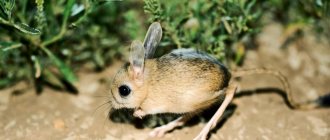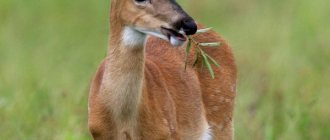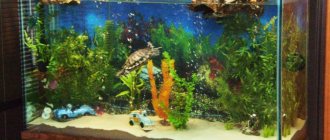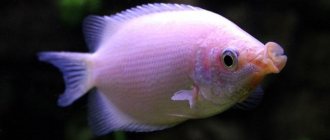Hot, dry and, at first glance, unsuitable for life, the desert accommodates a huge variety of representatives of the animal world. On our planet, deserts occupy about a third of the land. The surface is covered with sun-baked sand, rubble and stones. It rains very rarely, and there are practically no water reserves. During the day, when the sun is at its zenith, desert animals hide. You can only see a couple of birds and a quickly running lizard. When the heat subsides, the area comes alive.
Addax
This large mammal is also called the Mendes antelope. It belongs to the subfamily of equine antelopes and lives in the northern regions of the African continent in desert and semi-desert. The animal has long curved horns, coat color changes depending on the season of the year, and feeds on desert grass and shrubby plants.
Desert Mammals
Caracal
This is a desert cat. Easily kills antelope. The predator is able to do this not only with its powerful grip and dexterity, but also with its size. The length of the caracal reaches 85 centimeters. The height of the animal is half a meter. The color of the animal is sandy, the fur is short and soft. The ears have long awn tassels. This makes the caracal look like a lynx.
The desert lynx is solitary and active at night. With the onset of darkness, the predator hunts medium-sized mammals, birds, and reptiles.
The name caracal can be translated as “black ear”
Giant mole rat
A representative of the mole rat family weighs almost a kilo and is 35 centimeters long. Hence the name. The animal is blind because it leads a life similar to that of a mole. The desert dweller also digs tunnels in the ground. To do this, the animal is equipped with powerful claws and large teeth protruding from its mouth. But the mole rat does not have ears or eyes. Because of this, the animal’s appearance is intimidating.
Mole rats are desert animals that can be encountered by residents of the Caucasus and Kazakhstan. Sometimes animals are found in steppe regions. However, living underground, mole rats rarely appear above it. If this happens, the animals burrow back at lightning speed. Therefore, the habits of mole rats are poorly studied even by zoologists.
The mole rat has no eyes, it navigates by ultrasonic vibrations
long eared hedgehog
This is the smallest representative of the hedgehog family. In the desert, the animal runs the risk of overheating, which is why it has grown large ears. Unlike the rest of the body, they are naked. The open area of the skin releases excess heat into the environment. This happens due to the expansion of capillaries. Their dense network penetrates every millimeter of the hedgehog’s ears.
With a body length of 20 centimeters, the spines of the long-eared hedgehog extend by 2.5 centimeters. The color of the tips varies depending on the habitat of the mammal. Due to the coloring of the needles, the hedgehog is camouflaged among the surrounding landscape.
You can, of course, distinguish an eared hedgehog from a regular hedgehog by its large ears.
Manul
It usually settles in the steppes, but in the south of Turkmenistan it also lives in deserts. Outwardly, the manul resembles a long-haired domestic cat. However, her face is fierce. Due to the anatomical structure, a cat's face always looks unhappy. It is difficult to train a Pallas's cat. It's easier to have a caracal at home.
The ends of the Pallas' hair are white. The remaining area of the hairs is gray. As a result, the color of the animal looks silver. There are black stripes on the face and tail.
Manul is the rarest type of cat
fennec
Otherwise called desert forest. Among the red cheats, the animal is the smallest, and not red at all. Fennec fox color is sandy. The animal also differs in its ears. Their length is 15 centimeters. The purpose of wearing such large ears on a miniature body is thermoregulation, as is the case with the desert hedgehog.
Fennec ears are adaptations of desert animals that perform another function. Large sinks capture the slightest vibrations in the air. This is how the fox cub identifies reptiles, rodents and other small animals that it feeds on.
Fenech cats are often kept as pets
Dune cat
It lives in the deserts of northern Africa and central Asia. This is the first time the animal has been spotted in the sands of Algeria. The discovery dates back to the 15th century. Then a French expedition walked through the deserts of Algeria. It included a naturalist. He described a previously unseen animal.
The sand cat has a wide head with equally wide-set ears. Their shells face forward. The ears are large. There are some sort of whiskers on the cat's cheeks. There is dense fur even on the pads of the paws. This is a device that saves the skin of a predator from burns when walking on hot sand.
The sand cat is one of the most secretive animals
Meerkats
One of the few socially organized inhabitants of deserts, they live in families of 25-30 individuals. While some are getting food, others are standing guard. Rising on their hind legs, the animals inspect the surroundings for approaching predators.
Meerkats are animals of the deserts located among the savannas of Africa. There, animals of the mongoose family dig underground passages, going 2 meters deep. They hide in holes and raise children. By the way, meerkats do not have courtship. Males literally rape females, attacking and taking when the chosen one is exhausted from the fight.
Meerkats live in clans in which each has a certain status
Pereguzna
Refers to mustelids. Externally, the animal resembles a ferret with large ears and a blunt muzzle. The color of the peregrine is variegated. Black spots alternate with beige and white.
The length of the saddle is 50 centimeters including the tail. The animal weighs about half a kilogram. Being small in size, the animal is a predator, settling in the burrows of its victims. At the same time, peregrines are excellent at climbing trees. The animals do this alone, uniting with relatives only during the mating season.
In the photo there is a re-dressing or bandaging
Jerboa
Rodents cannot be more than 25 centimeters in length. Most of it comes from a long tail with a brush at the end. The body of the animal is compact. The jerboa's paws are jumping, and the hand on the tail acts as a rudder in the air.
The fauna of the desert is complemented by not a single jerboa, but about 10 species. The smallest of them do not exceed 4-5 centimeters in length.
Jerboas have a large number of enemies, which negatively affects their life expectancy
Camel
In North Africa the animal is sacred. The fur of camels reflects light, saving the “ships of the desert” from the heat. Camels store water in their humps. Some animal species have two of them, while others have one. The filler is encased in fat. When there is a lack of water, it splits, releasing moisture.
When water supplies are depleted in the humps, camels unerringly find sources of moisture. Animals can smell them at a distance of 60 kilometers. Also, “ships of the desert” have excellent vision. Camels notice movements at a distance of a kilometer. Animals also navigate among the dunes using visual memory.
A camel's humps contain not water, but adipose tissue that can be converted into energy.
Addax
This is a large antelope. It reaches 170 centimeters in length. The height of the animal is approximately 90 centimeters. The antelope weighs up to 130 kilograms. The color of the ungulate is sandy, but there are white spots on the ears and face. The head is decorated with long horns curved in a large wave.
Of all the antelopes, the addax is best adapted to life among the dunes. In the sands, ungulates find sparse vegetation, from which they obtain not only nutrients, but also water.
Antelope addax
Dorcas
The Dorcas gazelle is small and slender. The color of the animal is beige on the back and almost white on the belly. Males have folds of skin on the bridge of their nose. The horns of males are more curved. In females, the outgrowths are almost straight and about 20 centimeters long. Males' horns reach 35.
The length of the most ungulate is 130 centimeters. At the same time, the animal weighs about 20 kilograms.
Gazelle Dorcas
These animals are similar to the common gazelle, but are much smaller. They live mainly in northern Africa. Dorcas is well adapted for life in the desert and can easily withstand high ambient temperatures. She can do without drinking water, obtaining the necessary liquid from the plants she eats.
Desert fauna: Dromedary camel
© Anna_Pakutina / Getty Images
It is worth noting that in the past, a large number of dromedary camels (or dromedaries) roamed the deserts of North Africa, but today only domesticated animals can be found, which, being incredibly strong and hardy animals, help people in African and Asian countries to transport heavy loads.
They are also used for riding. Contrary to the opinion of many people, these animals do not store water in their hump, but fat, which they feed on in case of food shortage.
yellow scorpion
One of the most dangerous representatives of the desert animal world. He is sometimes called the deadly hunter. This small straw-yellow insect with an aggressive character kills its prey with a blow of its tail, at the end of which there is a poisonous sting. It is able to withstand daytime heat and sudden night cooling.
What animals live in the Sahara Desert: African ostrich
© vblinov/Getty Images
Although the ostrich cannot fly, it is one of the fastest animals on Earth, capable of reaching speeds of up to 70 km/h.
But besides its speed, the ostrich can boast of several more characteristics: it can move great distances, has excellent hearing and vision, and can safely fight off predators with its powerful legs.
Mainly feeds on grass, but sometimes eats small animals. Ostriches from the Sahara Desert are a separate subspecies.
Beetle Stenocara gracilipes
The insect lives in one of the driest deserts in the world, the Namib in southern Africa. The western regions of the desert are often shrouded in fog, formed from the mixing of the cold Bengal air current with the warmer, humid Atlantic air current. To obtain water, beetles expose their elytra to the humid wind of the ocean. Water droplets condense on them and are then used by insects.
Arctic
The Arctic desert zone stretches from North America to Asia. The climate here is quite harsh - in some places the atmospheric temperature can reach -50 °C with little precipitation. Vegetation is sparse. We will name the animals of the Arctic deserts:
Cape ground squirrel
The animal lives in the arid regions of South Africa, settling in shallow burrows. Outwardly, it slightly resembles ordinary squirrels, but does not live in trees. The body length of this desert rodent is about 22-26 cm. It has a tail of the same length. The animal's diet includes seeds and fruits, edible rhizomes and bulbs of various plants, insects, and small lizards.
Desert birds
Griffon Vulture
Red Book bird within Russia and the countries of the former Soviet Union. The predator is named white-headed because it is mostly brown. White color is present only on the head and a little on the legs of the bird. It is a large flying predator, weighing up to 15 kilograms. The wingspan of the vulture reaches 3 meters, and the length of the bird is 110 centimeters.
The head of the vulture is covered with short fluff. Because of this, the body seems disproportionately large, because it is hidden under full, long feathers.
Barn owls are considered long-lived, living from sixty to seventy years
Vulture
All 15 species of vultures live in desert areas. Most birds do not exceed 60 centimeters in length. Vultures weigh about 2 kilograms.
All vultures have a large and hooked beak, bare neck and head, hard feathers and a pronounced crop.
The vulture is a big lover of carrion
Ostrich
The largest flightless birds. Ostriches cannot fly into the air not only because of their heavy weight, but also because of their underdeveloped feathers. They resemble fluff and are not able to withstand air currents.
The African ostrich weighs about 150 kilograms. One bird egg is 24 times larger than a chicken egg. The ostrich also holds the record for running speed, accelerating up to 70 kilometers per hour.
Ostrich is the largest bird on the planet
Vulture
What animals in the desert can stop being found? Vultures. Over the past decades, only 10% of the population has remained. The species is listed in the International Red Book. Their prey is partly to blame for the birds' deaths. They eat food and grass “stuffed” with pesticides.
The second factor in the decline in the vulture population is poaching. They also hunt protected rhinoceroses and elephants. Vultures flock to the carcasses until they are transported.
Employees of environmental organizations are combing desert areas, focusing specifically on flocks of scavenger birds. In order not to find the main prey of poachers, they also shoot vultures.
Looking out for prey, vultures are able to rise above the ground more than 11 kilometers. Other birds are not capable of flying higher than Everest.
Jay
The saxaul jay lives in deserts. She is the size of a blackbird. The jay weighs about 900 grams. The color of the bird is ashen on the back and pinkish on the chest and belly. The tail and wings are black and have a blue tint. The animal has long gray legs and an elongated, pointed beak.
The desert jay prefers to feed on coprophages. These are organisms that eat feces. Accordingly, saxaul jays look for breakfast, lunch and dinner in the excrement of other animals.
Desert Raven
Otherwise called brown-headed. Not only the head, but also the neck and back are chocolate-colored. The length of the bird is 56 centimeters. The bird weighs about half a kilo and is found in Central Asia, the Sahara, and the deserts of Sudan.
The desert raven nests on acacia, saxaul, and tamarisk. Females build nests on them together with males, using the dwelling for several years in a row.
Desert Shrike
It belongs to the passeriformes, weighs about 60 grams, and reaches a length of 30 centimeters. The color of the bird is gray-gray. Black stripes run from the eyes to the neck.
The shrike is one of the desert animals of Russia and is found in the European part of the country. Beyond its borders, the bird is found in the Middle East, Central Asia, and Kazakhstan.
Ryabka
Lives in the deserts of Africa and Eurasia. Like many birds of arid areas, sandgrouses fly for water for many kilometers. During the breeding season, chicks remain in the nest. Sgrouse bring them water on their feathers. They absorb moisture from representatives of the species.
There are 14 species of sandgrouse in nature. All live in arid steppes and deserts. In order to water the chicks, the hazel grouse “covered” even their paws and toes with feathers. From the outside it seems strange why a desert dweller needs such a warm “fur coat”.
Horned viper
A sandy-yellow body up to 80 cm long, a flat head above which rises a pair of sharp horns, an unusual manner of movement – these are the features of this reptile. The viper is well known in the arid regions of North Africa and the Arabian Peninsula. The reptile camouflages itself well, burrowing into the sand, and feeds on small rodents, birds and lizards.
Desert reptiles
Snake arrow
A colubrid venomous snake, typical of Central Asia. The species is especially numerous in Kazakhstan. Sometimes the arrow is found in Iran, China, and Tajikistan. There the snake moves so quickly that it seems to be flying. That's why the reptile was nicknamed the arrow.
The body of the arrow also matches the name. The snake is thin, with a pointed tail. The animal's head is also elongated. Inside the mouth are poisonous teeth. They are deep-set and can only penetrate the victim when it is swallowed. Only miniature creatures are capable of swallowing a small one. Therefore, the arrow poses almost no threat to humans.
Arrow is a very fast snake
Gray monitor lizard
It grows up to one and a half meters and weighs more than 3 kilograms. The giant lives among lizards in the East, Africa, and Asia. Only young monitor lizards are gray. Adults are sandy in color.
Zoologists believe that monitor lizards are the ancestors of snakes. Lizards of the genus also have a long neck, a deeply forked tongue, and the brain is enclosed in a bony membrane.
The gray monitor lizard is one of the largest reptiles
Round head
Found in Kalmykia. Outside of Russia, the lizard lives in the deserts of Kazakhstan, Afghanistan, and Iran. The length of the animal is 24 centimeters. The lizard weighs approximately 40 grams.
The lizard's profile is almost rectangular, but there are skin folds at the corners of the mouth. When the animal opens its mouth, they stretch. The outer sides of the folds are oval. Therefore, the head of a lizard with its mouth open appears round. The integument inside the animal's mouth and on the inside of the folds is pink-scarlet. The size of the open mouth and its color repel roundhead offenders.
The roundhead buries itself in the sand by body vibrations
Efa
Belongs to the viper family. The snake lives in Africa, Indonesia and Asian countries. Living in deserts, efa grows to a maximum of 80 centimeters. Often the snake stretches only half a meter. This helps save resources. The reptile needs them 24 hours a day. Unlike other snakes, the epha is active both during the day and at night.
Efa is poisonous. With the small size of the animal, the toxins of one individual are enough to kill an adult. In the absence of medical care, he will die painfully. Efa's poison instantly corrodes red blood cells.
Horned viper
The snake is medium in size. The length of the animal rarely exceeds a meter. The horned viper differs in the structure of its head. It is pear-shaped and flattened. Above the eyes, several scales are arranged into horns. The snake's tail is also covered with similar spines. The needles are pointed outward.
The horned viper looks scary, but the snake's venom is not fatal to humans. Animal toxins cause a local reaction. It is expressed in tissue swelling, itching, pain at the site of the bite. You just need to be patient. The discomfort goes away without leaving a trace on your health.
The snake got its name from the pair of horns on its head.
Sand boa
It is the smallest in the boa constrictor family. A relative of the anaconda does not even grow to the meter mark. If you look at the snake's anus, small claws are visible. These are the rudiments of the hind limbs. Therefore, all boas are called pseudopods.
Like other boa constrictors, the desert boa obtains food by grasping and squeezing its prey.
Spiketails
Representatives of a genus of 16 species of lizards. They are found in the Sahara, deserts of Algeria. Animals choose mountainous, rocky wastelands.
The tail of lizards of the genus is covered with spine-like plates. They are arranged in circular rows. Thanks to its exotic appearance, the lizard began to be kept in terrariums.
Spiketails hide by leaving their spiked tail outside
Gecko
There are 5 species of skink geckos that live in deserts. Everyone has a wide and large head. She is set high. The scales on the tail are folded like tiles.
Animals of deserts and semi-deserts choose dunes with sparse vegetation. Lizards do not drown in sand because they have fringed scales on their toes. The growths increase the area of contact with the surface.
Steppe tortoise
It is called steppe, but lives exclusively in deserts, loves thickets of wormwood, saxaul and tamarisk. The animal differs from the marsh turtle in its convex shell. It is not suitable for cutting waters. Where are they from in the desert?
There are no swimming membranes between the toes of the steppe turtle. But the animal’s paws are equipped with powerful claws. The reptile uses them to dig holes in the sand. The life of animals in the desert has made adjustments to their anatomy.
Being a long-liver in the desert, the lifespan of turtles is significantly reduced when kept outside the wild
Gray monitor lizard
In Africa, this animal lives in the northern sandy deserts, as well as in the foothills. For settlement, he uses ready-made burrows of other animals, having previously expanded them. He can run fast, inflate his body and strike the ground with his tail to scare away the enemy.
Conclusion
The desert fauna is more diverse than described above. About 60 species of mammals and more than 300 species of birds are found in the Sahara alone. There you can find a variety of insects and reptiles, jerboas and hamsters, gerbils and antelopes, jackals and mongooses, maned sheep and miniature foxes, dune cats and camels.
Rodents
Many desert animals are constantly in danger and struggling to survive. Rodents are small representatives of fauna. Their activity increases with the onset of dusk, when the heat subsides. At this time, the search for food begins.
Jerboa
This is a small mammal that belongs to the order of rodents. It adapts perfectly to any climatic conditions, so it also feels good in the hot desert. The length of the animal can reach from 4 to 25 cm. A special feature is its tail, which is 3 times larger than the body length. Searches for food at night and sleeps during the day. The diet includes fruits, grains, roots of bushes and trees, as well as small insects, worms and larvae.
It has developed limbs, thanks to which it runs quickly and escapes from enemies. The muzzle is large, flattened on the sides. The sense of smell is practically absent, but thanks to their long whiskers they find food for themselves.
Interesting fact! All the jerboas were clean. They can brush their fur up to 30 times per day. And the smallest representative fits in a tablespoon.
Spiny mice
An amazing animal that reaches a length (including tail) of only 14 cm. The head is small with large black eyes like buttons and round ears. The rodent's back is covered with light spines, like a hedgehog's.
They are usually gray or pale yellow. White and soft hairs grow on the lower part of the body. Males differ from females in that their fur is longer and forms a kind of mane on their neck.
Spiny mice can shed their skin when in danger. It is not as durable as other mice. Regeneration in rodents occurs quickly and scars do not form at the wound site. They live in Saudi Arabia, Africa, the islands of Crete and Cyprus.
North African gundi
These small animals live in rocky deserts and semi-deserts. Shelter is found in crevices, under rocks. Their ribs are able to flatten, so they are able to crawl into narrow crevices of rocks. They have small and flat ears, as well as large eyes.
The length of their body is 16-23 cm, and the tail is from 1 to 6 cm. The fur, like that of a chinchilla, is soft and fluffy, it perfectly protects animals from cold and heat.
Gundis travel long distances to find food. They feed on plant seeds, grass, leaves, and stems. They live in families. With peculiar cries they notify their relatives of the approaching danger.
Desert hedgehog
The desert or long-eared hedgehog lives in the semi-deserts of Africa. Body length 13-27 cm, weight up to 500 g. The needles on the back are thin and short. The muzzle is covered with light hair, the eyes are small and black, and the ears are quite large. This small desert animal comes out to hunt after dark.
Eats locusts, centipedes, spiders, scorpions. Thanks to its strong jaws, it deftly grabs its prey and pulls it out from under the soil.
What are the adaptations of desert plants to their habitat*:?
In the desert: - long root - small area of the leaves (thorns), so that the water evaporates more slowly - In many desert plants, the leaves are covered with either fluff or a waxy coating, which also reduces the area of leaf evaporation. in the tundra: - in the tundra, only the topmost layer of soil and the lowest layer of air adjacent to the earth’s surface are most favorable for plant life. Both layers measure only a few centimeters. Therefore, many tundra plants are very short, they are spread out on the ground, and their root systems grow mainly in the horizontal direction and almost do not go deep. - also a small area of the leaves (for the same reason) An insignificant amount of precipitation falls in the tundra, but thanks to the impenetrable layer of permafrost, there is always a sufficient amount, often even an excess, of moisture in the soil. Nevertheless, the flow of water into the plant is difficult here due to the low soil temperature, which reduces the overall vital activity of the roots; Due to the strong heating of the soil surface, especially on summer days, and the drying activity of the winds, evaporation here is very strong. This explains the drought-resistant structure of Arctic plants - the formation of dense “cushions” in some herbaceous plants. The cushions of saxifrage are so dense that from a distance they resemble moss-covered stones or moss sods. Cushion growth has the advantage of allowing the plant to have a very small surface area and thus dramatically reduce surface evaporation. The cushion-shaped form is also beneficial to plants because the growing points of the plants are reliably covered in the cushions with old dead and living wintering leaves. In general, the temperature inside the pillow is more favorable.
Big inhabitants
In the desert zone, in addition to small animals, there are also large ones that live without water for quite a long period.
Large animals are represented by saigas, steppe foxes, caracals, goitered gazelles, wolves, and desert sheep.
Saigas, steppe foxes and sheep
Saigas are small semi-desert and desert animals that belong to the artiodactyl family. Dimensions do not exceed 150 cm in length, weight - approximately 70 kg. Females and males can be distinguished by their horns, since only males have them. Saigas are very fast, their speed can reach up to 90 km/h.
They live in herds. Food includes foods such as herbs, shrubs, lichens and others. Their lifespan can reach up to 10 years.
Steppe foxes also have another name - corsacs. Animals belong to the class of predators. They have an amazing sense of smell, good hearing and acute vision, which makes it easy to get their food.
Body length - up to 100 cm, weight - about 6 kg. Foxes are very capable, they can climb and hide anywhere . They easily climb trees and move at high speed, catching up with their prey. The food they prefer are hares, marmots, gophers, jerboas, and voles.
These desert foxes are very agile, allowing them to catch birds with ease. But there are also situations when it is impossible to find prey, then the animals feed on ordinary insects or even eat the remains of dead animals. In the desert, corsacs can live up to 7 years.
Desert sheep have a fairly impressive length - up to 1.8 m. Their weight can be up to 100 kg. They live in small groups.
Popular message topics
- Ancient Athens
Athens is an ancient Greek polis (city-state), which flourished in the 5th century BC. It has been the hallmark of Greece for more than two millennia. - Metal alloys
Long ago, people noticed, speaking about biology, for example, that if you combine two organisms, the third will surpass its parents. It turns out that the same principle works in chemistry, so the history of the appearance of alloys can be considered straightforward. - Plantain
Known to children and older generations, plantain is a herbaceous plant. We are used to seeing it everywhere: in vegetable gardens, in clearings, next to roads, in vacant lots, near water bodies, even in sand pits and on the streets
Sahara
The most famous and largest sandy desert on the entire planet. The total occupied area is about 9 million m². This area is the hottest on the planet. Sometimes the air temperature reaches +57 °C. At the same time, there are constant heavy rains here, but there are often sandstorms, during which the sand can rise 1000 m in height.
The animal world of the Sahara Desert is very diverse, despite the harsh living conditions. Therefore, these representatives of the fauna can be called the most interesting on the planet, and they are very rarely found in other parts of the globe:
Temperate zone
This is a strip of 500 kilometers from the Caspian lowland to South America. Territories in Eurasia differ from those in North and South America in atmospheric temperature. In Eurasia, in winter it can drop to -20 °C. The soil can be described as saline, brown and light chestnut. Towards the south there are more signs of a real desert.
The fauna of the semi-deserts of Russia are characterized by gazelles, goitered gazelles, viscachas, and houbara bustards. Lizards, turtles, saigas and snakes are found in South and North America.











